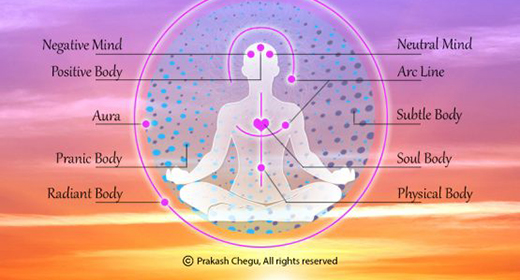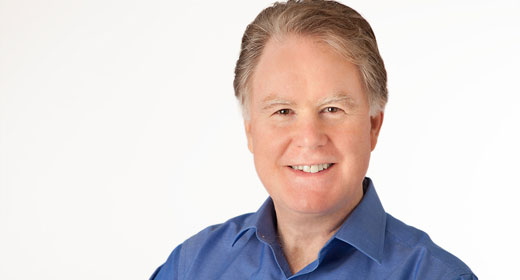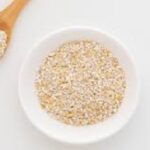by John Robbins: The fitness icon, Jack LaLanne, died at the age of 96…
Healthy and active until the very end, he was a powerful example of the role that exercise and nutrition can play in elevating a life. Jack lived long and vibrantly, and inspired millions of people to make positive health choices.
Jack’s death reminded me of the life and untimely death of another fitness icon of the 20th century, Jim Fixx. Jim’s books were wildly popular, and his work was credited for helping start the fitness revolution in the Western world. But while Jim shared with Jack a passion for the health-giving benefits of exercise, these men differed on a crucial point: Jim believed that exercise was key, and that diet and nutrition played a far smaller part in health.
Like Jack LaLanne, Jim Fixx was unhealthy in the early part of his life. Up until his mid-thirties, he smoked two packs of cigarettes a day, loved his burgers and shakes, and weighed 220 pounds. At age 35, he stopped smoking and began running. Within a short time he was running 80 miles a week, racing marathons, and had lost all his excess weight. His belief in the healing powers of running was tremendous. In his bestselling book, The Complete Book of Running, Fixx repeatedly quoted Thomas J. Bassler, M.D., a California pathologist who was then advancing the theory that marathon runners actually develop a sort of immunity from heart disease. Fixx repeatedly quoted Bassler’s assertion that any nonsmoker fit enough to run a complete marathon in under four hours would, regardless of his or her diet, never suffer a fatal heart attack.
Jim Fixx thought that a healthy diet wasn’t that important. He believed that if you don’t smoke and if you exercise sufficiently, you are protected against heart disease.
Fixx knew that his father had died of a heart attack at age 43. But he believed that exercise (and the improved circulation it generates) would be an adequate defense. He thought that as long as he ran daily and didn’t smoke, he would stay healthy and avoid his father’s fate.
Jim didn’t just ignore expert advice that he needed to eat more healthfully. He went out of his way to forcefully criticize those who offered such advice. At the time, probably the world’s foremost advocate of eating a healthy diet as a means to open and heal clogged arteries was Nathan Pritikin. In his book titled Diet for Runners, Pritikin described a conversation he had with Jim Fixx:
Jim Fixx phoned me and criticized the chapter “Run and Die on the American Diet” in my book The Pritikin Promise. In that chapter, I said that many runners on the average American diet have died and will continue to drop dead during or shortly after long-distance events or training sessions. Jim thought the chapter was hysterical in tone and would frighten a lot of runners. I told him that was my intention. I hoped it would frighten them into changing their diets. I explained that I think it is better to be hysterical before someone dies than after. Too many men, I told Jim, had already died because they believed that anyone who could run a marathon in under four hours and who was a nonsmoker had absolute immunity from having a heart attack.
Sadly, only six months after this conversation, a passing motorcyclist discovered a man lying dead beside a road in northern Vermont. He was clad only in shorts and running shoes. The man was Jim Fixx.
Jim Fixx, the nation’s leading spokesperson for the health benefits of running, had tragically died of a massive heart attack while running alone on that country road. Only 52-years-old, he paid a terrible price for his belief that he didn’t have to pay much attention to nutrition, and for thinking that exercise alone was sufficiently protective. An autopsy revealed that three of his coronary arteries were more than 70 percent blocked, and one was 99 percent obstructed.
You may have heard the Jim Fixx story before. He became the butt of late-night jokes as overweight comedians made fun of the fact that the running guru had died of a heart attack. Sedentary people often want to believe that exercise isn’t that important. They comfort themselves by telling and retelling the Jim Fixx story, as if the moral was that there’s no harm in being a couch potato. But to do that is to miss the point entirely.
The real moral of Jim Fixx’s tragic death is that while exercise is wonderful and necessary for a healthy life, it cannot make up for poor eating habits.
Sadly, many people exercise regularly, and believe that by doing so they can make up for almost any manner of dietary transgressions. One woman I know regularly eats rich desserts immediately after exercising, on the grounds that she “has earned it.” Each time she exercises, she calculates the number of calories she has burned, and then treats herself to a piece of cheesecake of that same (or slightly higher) number of calories. And then she wonders why she isn’t losing weight.
On the other hand, I know people who are extremely fastidious about what they eat, but don’t exercise. Over time, as their bodies begin to break down, they tend to become even more picky about their food. They may spend thousands of dollars on supplements, but somehow never manage to get off their butts.
It takes both. As Jack LaLanne often said, “exercise is king, and nutrition is queen. Put them together and you’ve got a kingdom.”
John Robbins is the author of many bestsellers including “The Food Revolution” and “Diet For A New America,” and of the recently released “The New Good Life.” He is the recipient of the Rachel Carson Award, the Albert Schweitzer Humanitarian Award, the Peace Abbey’s Courage of Conscience Award, and Green America’s Lifetime Achievement Award. To learn more about his work.










































